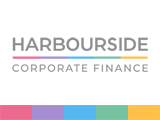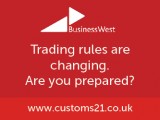Making Tax Digital (MTD) for VAT was finally introduced on April 1 this year in a move that will affect all VAT-registered businesses with an annual taxable turnover above the registration threshold of £85,000. If your business hasn’t yet taken any action then it may not be too late but you must act now to comply with the MTD regulations. Pearson May partner Matthew Rutter here sets out below some frequently asked questions which may assist you.
What does MTD for VAT mean for my business? 
Many businesses will already be used to filing their VAT returns online through HMRC’s gateway, but under MTD for VAT, this in isolation is no longer an option and the new requirements represent a major change. Businesses must now keep digital records for VAT purposes and file their VAT returns digitally using MTD-compatible software. This software must be capable of recording and preserving records in a digital form, sending VAT returns and information to HMRC directly from the software, and receiving information from HMRC.
As the MTD for VAT rules were introduced for VAT accounting periods commencing on or after April 1, 2019, many businesses will not yet have had to prepare and file their first MTD VAT Return. Those businesses with VAT quarters which align with the calendar quarters are among the first to submit their VAT Returns under MTD. The quarter just ended on June 30 will therefore be the first MTD VAT Return for many businesses and this will be due for submission within the usual timescale i.e. by August 7, 2019 at the latest.
Will my accounting software comply with MTD?
The major accounting software providers have developed or upgraded their products so that they will enable users to meet the record keeping and filing requirements. Hopefully businesses that currently keep their accounting records on accounting software will by now have had confirmation from their provider that their software is compliant. But if you haven’t, you should check with your software provider immediately.
What if I do not use accounting software?
Many businesses will currently be using spreadsheets as part of their VAT records. Although spreadsheets do qualify as ‘digital records’, a standard spreadsheet alone will not satisfy the MTD requirements. There must be a digital link from the spreadsheet to HMRC’s systems in order to submit the VAT return data directly to HMRC. There are now a number of providers on the market of so-called ‘bridging software’ which in its most basic form is an ‘add-on’ to a spreadsheet which enables users to submit their VAT Return information contained in their spreadsheets to HMRC in a manner which is compatible with HMRC’s MTD systems.
Businesses that maintained their accounting records manually, such as using cashbooks etc., should already have amended their systems to keep digital records (whether that be by way of spreadsheet or software etc.). If you generally only prepare your VAT records at the end of the quarter in question, then it may not be too late, but you must take action immediately to avoid a last-minute panic as the submission deadline looms.
What if I am not able to use my software to submit my VAT Returns under MTD?
Some businesses may be using older versions of software programs that may well not have the MTD functionality which could mean that they can’t use your software to submit the Return under the MTD rules.
In such situations, they may be able to export or transfer their VAT accounting records from their software into a spreadsheet, for example, and then use a form of bridging software to submit the information to HMRC in an ‘MTD-compatible’ format.
The MTD rules imposed by HMRC were initially written to enforce so-called ‘digital links’ between one or more pieces of software/spreadsheets which mean that there has to be a digital link between the sets of data in order to comply with MTD. However, in a recent update to the regulations, HMRC relaxed the rules slightly – for a period of one year – to enable the use of ‘cut and paste’ from one set of digital records in to another, in order to then use the other software/spreadsheet to submit the VAT Return to HMRC but still comply with MTD.
This one-year ‘soft landing’ period will be in force until April 1, 2020, by which point businesses are expected to have digital links between all their accounting software products used to prepare and submit VAT Returns. Each business will have very specific circumstances however, depending on the software and records they keep, so specific advice should be sought.
Where can I find more information?
If you have an accountant or bookkeeper already assisting with your VAT Returns/accounts etc. then obviously they may well be a helpful port of call. There is also a lot of information concerning MTD on HMRC’s website and, in particular, VAT Notice 700/22 is a useful resource which explains the requirements of MTD for VAT in more detail.
The above is for general guidance only and no action should be taken without obtaining specific advice.


















